From trying to "cure" homosexuality to severing dogs' heads to study artificial lungs, we give you the most WTF science experiments known to humankind.
History is filled with examples of cruel and unusual experiments performed on human beings and animals for the so-called sake of advancing science. Even at the time they were performed, such experiments should have been considered crazy. And today, at the very least they should elicit a “WTF?”
In some cases it seems that the psychology professionals administering the tests were the crazy ones—not the subjects involved. In the following experiments, the victims can be categorized into five groups: chimps, dogs, gays, unsuspecting participants, and Jews.
The Chimps
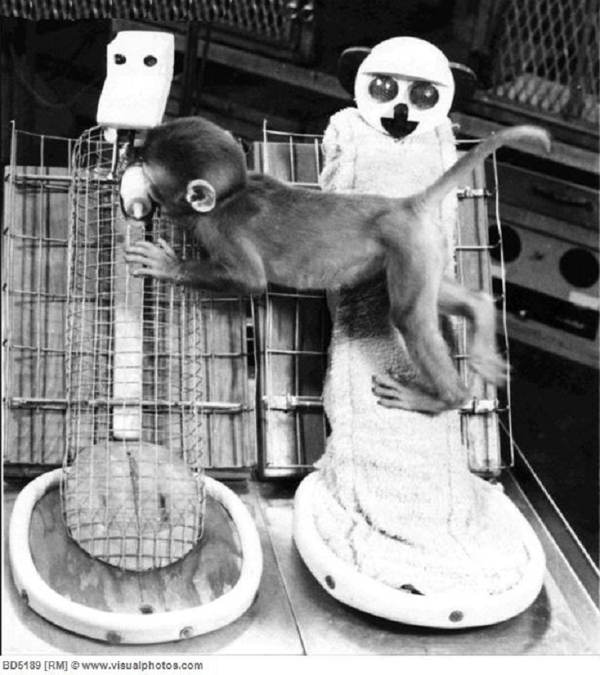
Harry Harlow experimented on monkeys by depriving them of all stimulation for as long as a year in a device he called the ‘pit of despair.’=
As disturbing as the experiments by Dr. Harry Harlow on rhesus monkeys were, they did generate some—albeit inadvertent—”good” results. Public outrage at Harlow’s work comprised one of the early steps toward the United States animal rights movement, which aims to wipe out the use of animals in the research, food, clothing and entertainment industries. His work is also said to be partially responsible for various ethical standards established for scientific study.
Harlow conducted his work at the University of Wisconsin-Madison where he did studies on maternal separation, dependency needs, and social isolation. Harlow utilized a number of questionable devices in his studies, the most objectionable of which being the incredibly cruel “pit of despair.”
Also called the “well of despair,” the isolation chamber allowed baby monkeys to be left alone in darkness for up to one year from birth, or repeatedly isolated from their peers. The result was severely psychologically disturbed monkeys that became models for human depression.
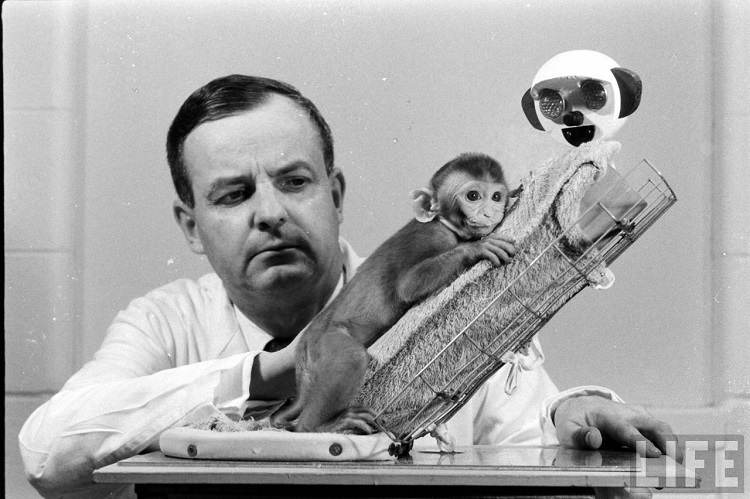
Dr. Harry Harlow with one of his test monkeys.
In his own words, Harlow wrote, “One of six monkeys isolated for three months refused to eat after release and died five days later…the effects of six months of total social isolation were so devastating and debilitating that we had assumed initially that twelve months of isolation would not produce any additional decrement. This assumption proved to be false; twelve months of isolation almost obliterated the animals socially.”

Chimpanzees and monkeys have long been used for scientific experiments Source: The Independent
Scientific research on chimps has been going on since 1923–when psychobiologist Robert Yerkes began using them for behavioral studies–and continues to the present. However, the United States has made progress after a blue-ribbon committee for the Institute of Medicine began looking into their ethical treatment and in 2011 established strict guidelines for chimp testing.
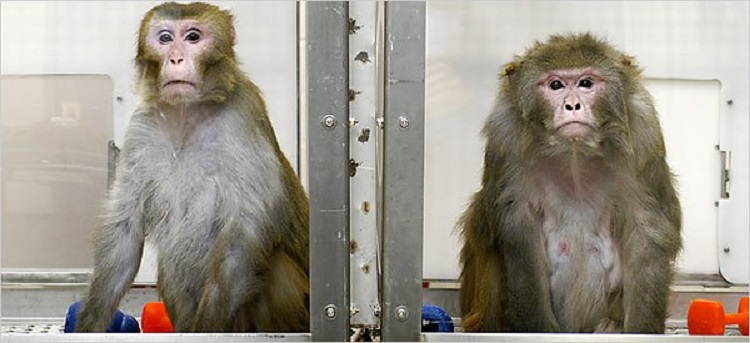
In 1969, monkeys were given access to destructive drugs and then left to their own devices for a study on drugs and addiction in humans.
The standards came too late for those animals that suffered through the “monkey drug trials” of 1969. In those experiments, anonymous researchers gave monkeys and rats the means and supplies to inject themselves with a wide array of dangerous drugs, including cocaine and morphine, to study the effects of drugs and addiction in humans.
The animals became so disturbed that some broke their arms trying to escape. Others tore off their fingers or removed all the fur from parts of their bodies; still others died from the experiments within two weeks.
The Dogs
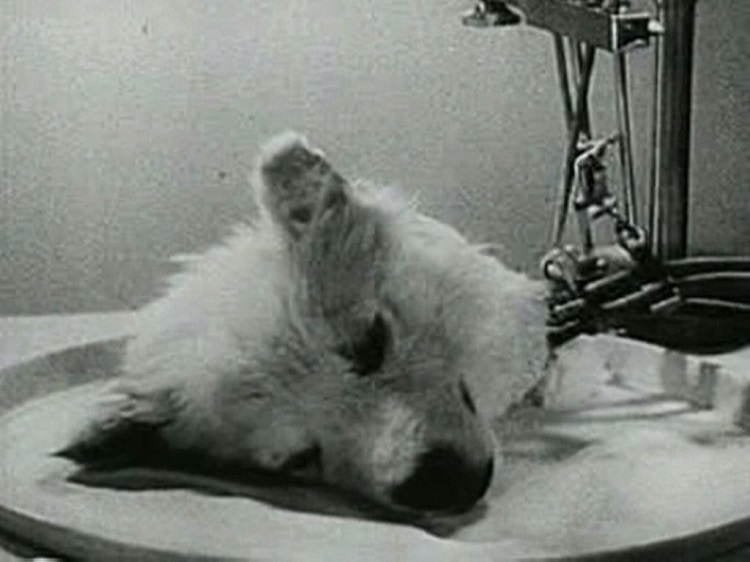
One of Sergei Brukhonenko’s severed dog head.
Perhaps it was Pavlov who inspired other Russian scientists to use dogs for experiments. But when compared to his rather benign conditioned reflex studies, some of Pavlov’s comrades went too far in using dogs to test a hypothesis. An apt example would be Soviet physician Sergei Brukhonenko, who used dogs to ensure that his primitive heart-lung machine, which he called an “autojector,” would work.
In a gruesome show of success, Brukhonenko used the device to keep the severed heads of dogs alive. When the Third Congress of Physiologists convened in 1928, Brukhonenko displayed one of his living dog heads for the international audience. To demonstrate that the dog head was actually living, the doctor banged a hammer, shined a light in the dog’s eyes and even fed it a piece of cheese to show that the disembodied head would react.

Sergei Brukhonenko. Source: Ultra
A few decades later, in 1954, Vladimir Demikhov unveiled an even more macabre experiment. In his efforts to perfect surgical techniques that could lead to the possibility of human heart and lung transplants, Demikhov created a two-headed dog by grafting the head, shoulders, and front legs of a puppy onto the neck of a grown German shepherd.

http://www.youtube.com/watch?v=ZY_8asXykOE
Demikhov unveiled his Frankensteinian Fido in front of journalists who watched as the two heads behaved and acted independently of each other. Instead of being appalled, people spoke of how the experiment illustrated proof of Russia’s advancement in medicine.
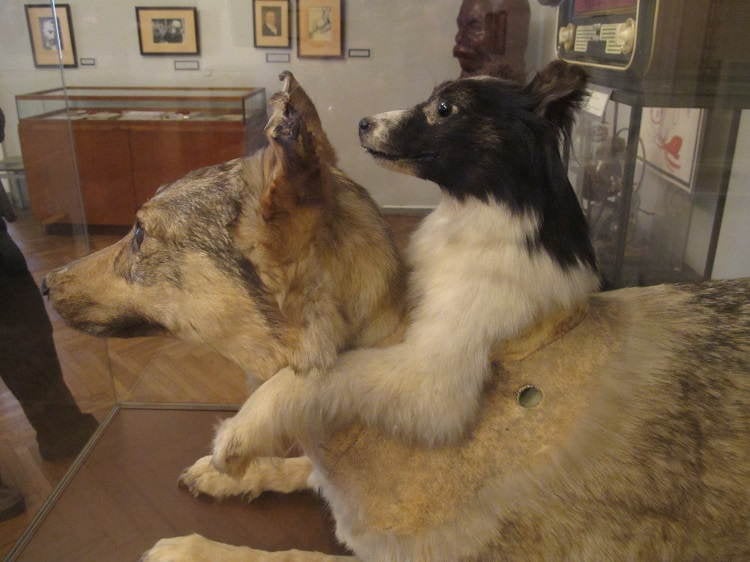
A taxidermy example of one of Demikhov’s experiments at the P. Stradins Museum for History of Medicine.
Demikhov created 20 such deformed dogs over more than a decade, trying each time to keep one alive for a long period. None lived more than a month.
The Gays
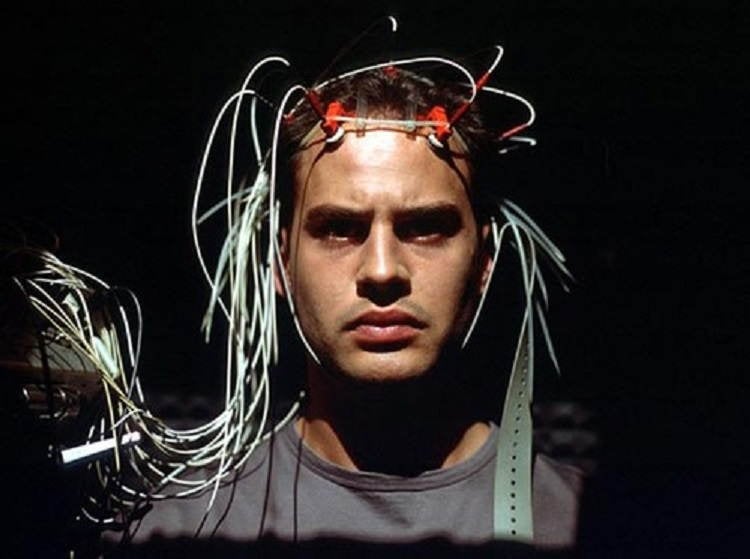
Robert Heath, left, of Tulane University conducted at least one experiment stimulating pleasure centers of the brain to try to cure homosexuality.
In modern times, it seems that purging or curing homosexuality has been a priority of some researchers and government officials. In South Africa, for example, the apartheid army tried to eliminate homosexuality from its ranks by forcing as many as 900 lesbian and gay soldiers to undergo ‘sex-change’ operations in the 1970s and ’80s. The methods were inhumane, to say the least, and invovled chemical castration and electric shock, among other unethical medical experiments.
In the 1950s, James Olds and Peter Milner of McGill University performed a series of experiments on rats, artificially stimulating the septal region of the brain to produce sensations of intense pleasure and sexual arousal. In 1970, Robert Heath of Tulane University decided to take the experiments to a new level, testing whether electronic stimulation of the septal region could turn homosexual men into heterosexuals.
Using a subject known only as B-19, the researcher was able to manipulate the man’s brain into a hyper state of sexual arousal, then introduced a female prostitute to the subject. Copulation eventually occurred between the two, and Heath declared that he had found at least a partial cure for being gay. Suffice it to say, B-19 was hardly cured.
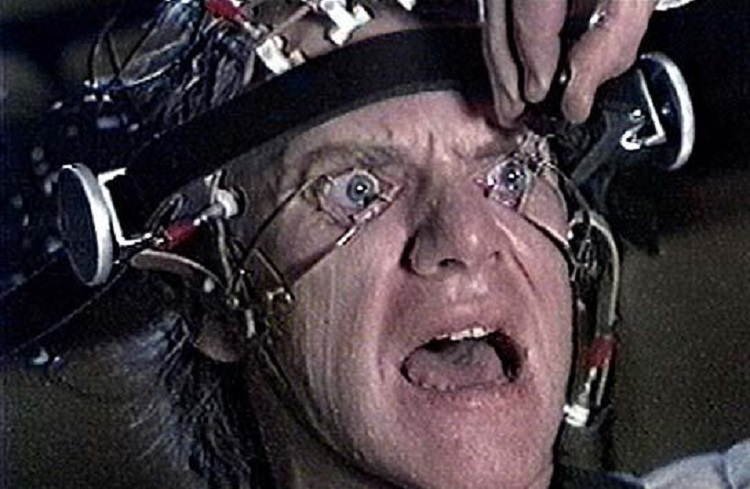
A type of aversion therapy is depicted in the film A Clockwork Orange.
With homosexuality still considered to be a mental illness at the time, other experiments and experimental therapies continued through the 1960s, with subjects being shown homosexual images that were paired with electric shocks and injections that caused vomiting. Such negative reinforcement, it was hoped, would create an aversion to same-sex attraction. Instead, the trials caused profound psychological damage, with at least one man dying after going into a coma from his “treatment.”
The Unsuspecting
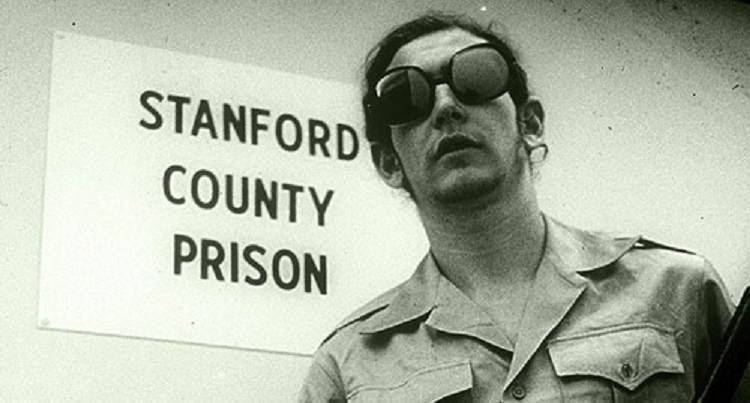
A study at Stanford that explored the relationship between guards and prisoners went terribly awry.
American governmental agencies and well-respected academic institutions have a sordid history with conducting dubious medical and psychological experiments without first informing their subjects that they are indeed being tested.
One of the most infamous experiments has become known as the Stanford Project. This “Lord of the Flies” scenario unfolded at Stanford University under the direction of psychology professor Philip Zimbardo and was funded by the U.S. Office of Naval Research. The experiment was meant to investigate prison violence and conflict between guards and prisoners.

Participants in the Stanford prison project. Source: Stanford University
While some two dozen young men were selected and paid to participate in a two-week prison simulation, they were not told what their roles would be. Things quickly deteriorated as students selected to be guards began to exhibit sadistic behavior while those chosen to be prisoners began to passively accept psychological torture. The Machiavellian experiment was discontinued after just six days when conditions began to unravel.
The CIA certainly has not kept its hands clean when it comes to sanctioning immoral or unethical experiments on unsuspecting human beings. During the ’50s and ’60s the agency seemed fascinated with using LSD as a war weapon. Project MKULTRA, or MK-ULTRA, was a code name for a CIA mind-control research program that may have continued for as many as two decades. Run by the Office of Scientific Intelligence, experiments conducted without the subjects’ consent or knowledge included administering LSD to CIA employees, military personnel, doctors, other government agents, prostitutes, mentally ill patients and members of the general public.
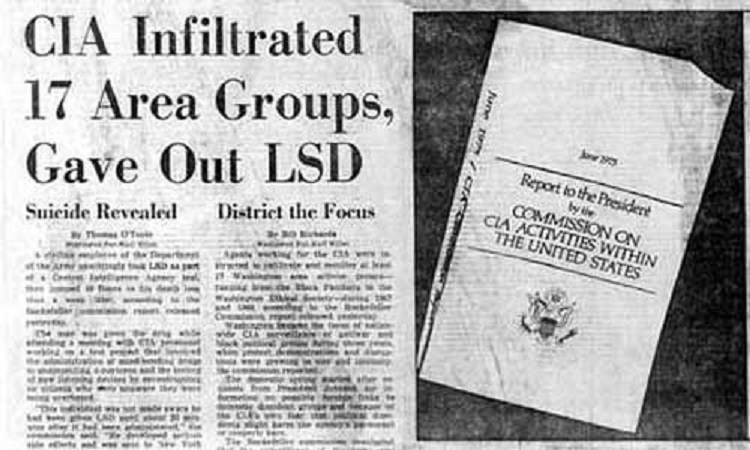
Headlines from CIA experiments. Source: When The News Stops
The CIA was interested in using LSD as a model for the creation of mind-controlling drugs to be used against their adversaries. Such interest came after it was reported that the Soviets, Chinese and North Koreans had used mind-control techniques on U.S. Prisoners of war in Korea.
Ted Kaczynski, better known as the “Unabomber”, was an unwitting victim of one of the Project MKULTRA experiments when he was a student at Harvard.
Researchers subjected him to conditions of extreme stress to measure his reaction to it. Later in life, Kaczynski became a recluse, sending a series of letter bombs nationwide over many years to more than a dozen people involved with modern technology. All told, he killed three people and injured 23 others.
The Jews

The infamous Richard Baer, Dr. Josef Mengele and Rudolf Hoess of the Third Reich.
Totalitarian governments have long performed horrific experiments on human beings during times of war, but none are as well documented or atrocious as those inflicted on Jews by Germans during World War II. The extent of human experimentation during the Nazi regime is both unimaginable and unconscionable.
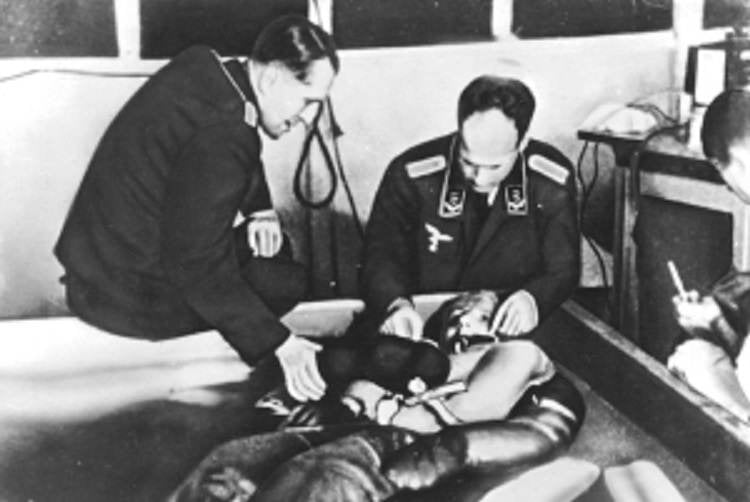
A cold water immersion experiment at Dachau concentration camp presided over by Professor Ernst Holzlöhner (left) and Dr. Sigmund Rascher (right).
Ostensibly conducted to help the German military develop more efficient weaponry, the experiments caused agony, deformity and even death in many prisoners of German concentration camps all for the sake of Nazi research projects.
In 1941, the Luftwaffe conducted experiments dealing with hypothermia, which translated into forcing prisoners to endure a tank of ice water for up to five hours or stand outside naked in sub-freezing temperatures for many hours. To test the possibilities of reviving and rewarming hypothermia survivors, some of the subjects were thrown into boiling water to increase their temperatures.
Dr. Josef Mengele, also known as the angel of death, became the most infamous figure to emerge from the Third Reich aside from Adolph Hitler. Mengele was known for a variety of sadistic experiments involving sterilization and genetics. At Auschwitz, Mengele was particularly interested in using twins to show the difference between genetics and eugenics. The twins were housed separately in the camp and withstood such tortures as having chemicals injected into their eyes to see if the agent would change their color.
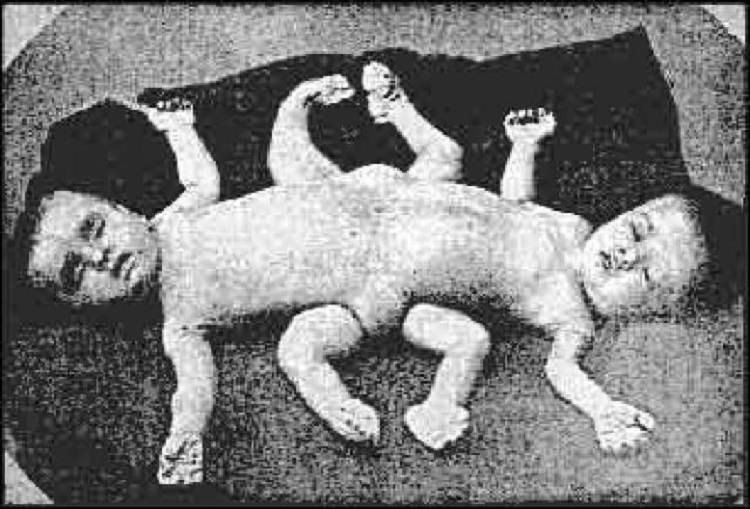
These two boys were sewn together to make conjoined twins.
Mengele also sewed twins together to see if he could create conjoined twins. But in most cases, one twin endured experimentation while the other was kept healthy as a control subject for comparison. More than 1,500 sets of twins underwent the experiments, and by most accounts, fewer than 200 individuals survived.
The Nazis were also notorious for experiments that involved performing horrifying medical procedures without anesthesia, inflicting chemical burns on prisoners, studying head injuries by continually knocking subjects over the head with a hammer and injecting people with various diseases to study their effects.
Next, read up on the horrific experiments of Nazi doctor Josef Mengele.





